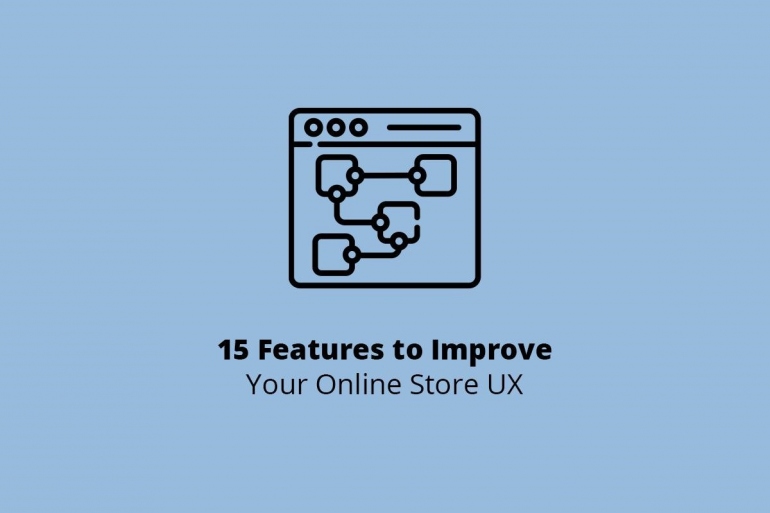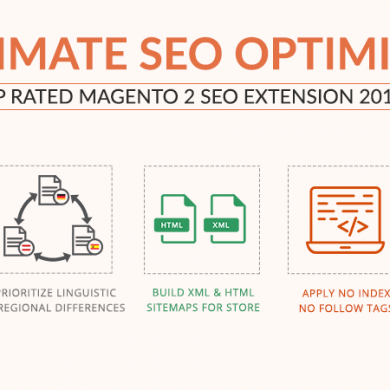It is no secret that eCommerce brands are the most widespread and successful business entities right now. However, launching an eCommerce site is not enough to reach your full business potential. You must invest time, money and human resources to improve your online store on a regular basis. Here are a few pieces of advice on which features to include in your online store’s UX design and how they will benefit the business.
Mobile-Oriented Store
With the popularity of smartphones, tablets and similar mobile devices growing by the day, your online store should have mobile-friendliness. When the individuals are running errands, going to college or attending a meeting, they might be browsing through your online store from their mobile device. As a result, you need to take their experience into account with the utmost importance. The experience should include mobile-responsive pages, lightweight elements and more.
It can also boost your business according to a study conducted by Experience Dynamics. The study showed that 52% of users lacked any interest in engaging with a company if its mobile-friendly design is not up to par. So make sure the components of your mobile site or app look good on mobile and come with convenient navigation for the smaller devices.
Top Featured Elements at the Home Page
You can grab the attention of visitors with these elements as soon as they launch the site or app on their device. This top area is where the eyes go first when we visit. Therefore, it must help us to find exactly what we are looking for by providing the right directions. This is also the portion that successfully highlights the ongoing promotional offers. These top-level navigation buttons must be clickable. Let’s discuss each of the top featured elements in greater details below:
Banners with Offers
Hang up banners citing your most exciting ongoing offers on top of your site. You can make it vibrant, sheer or chic according to your brand image and aesthetic.
For example, Filippa K embraced the classic look to highlight its Final Sale Reductions of 50% discount. You will see it covering a major portion of the topmost area as soon as you launch their site. Although the space taken by it is vast, the main message is very brief with the contrasting text color. On the other hand, brands like Best Buy and The North Face use big text and bright graphics to attract potential buyers.
If you want to go absolutely minimalistic, you can just use one line of highlighting banner on top like Nike. This well-known global shoe brand displays a simple sliding banner on top with straightforward promotion descriptions.
Accessible and Simple Menu
If the visitors need to spend time figuring out which button does what, then the UX has clearly failed to do its job. Keep it as simple as possible so that the users don’t get confused.
On a fully expanded window of general desktop devices, the main product categories should be displayed at the top menu on your site. In the case of a mobile device or a smaller desktop window, the menu can be made collapsible. This ensures maximum utilization of the available space.
The menu items must include target demographics (like Men, Women, and Kids) and distinct product categories (like Beauty, Bags, Clothing, Shoes, etc.). In addition to these options, it should also have special highlighted items like the current promotions and latest collections.
Easy Navigation
Convenient navigation design is a non-negotiable aspect for online store UX designs. Before going for the main implementation, sketch out a tree of products starting from the broadest categories. This will help you to classify the products more clearly and let you know how to progress with each category.
Keep the target demographic in mind as well while doing so. The ideal practice is categorizing based on gender and age. For instance, when a visitor hovers on “Women”, it should display either sub-category like Tops, Pants, Shorts, Activewear, etc. If the visitor clicks on “Women”, it should take her to a full page of women’s products with a search bar on top and several filtering options on the side. This minimized the time taken by each customer to reach the product he or she is looking for.
Live Chat
There should be no time limit imposed on an eCommerce brand’s live support feature. People from all around the world are accessing your online store 24/7. So your chat support should also be live 24/7. FurstPerson found out through a study that 77% of customers are less likely to make a purchase if the store does not offer live chat. Your store online store’s customer service chat should, therefore, be flawless.
A good UX design for an online store will stick this live chat option on every page with a small but bright collapsible icon. Once the user clicks on it, he or she can start presenting their queries. If the store wants to provide more accurate services, the chat can ask users to enter their residence area before starting the chat.
Social Media Integrations
It is the era of social media platforms like Facebook, Twitter, Instagram, and Pinterest that have enabled the masses to experience brands like never before. They can keep track of which products they like and what offers each brand is offering. This makes the whole shopping ordeal a lot less tiring. So make sure your online store has its official pages or accounts on the main social media platforms. Now integrate these identities through respective icons at the bottom of your homepage.
Additional Categories
As we mentioned before, you can include additional temporary categories on the menu to highlight ongoing sales and special collections. These menu items can be presented with a different color than the usual palette. They can also include subtitle animations to set them apart from other products.
Smart Product Listing
Make the products more easily accessible by listing them smartly. Once the user reaches his or her desired product page, the items will be displayed therein individual grids. A smart move would be to include the available colors and sizes of each product here along with the price. There should be buttons of purchase and adding to wish-list in vibrant colors contrasting the background. This helps the visitors make their purchasing decision faster and allows them to add a product to their cart or wish-list within a second.
Informative Product Page
When the user clicks on a product, it should take them to a whole new product landing page with all the item details. Such information on the product detail page must include multiple photos of the product, its sizes, colors, rating, small description, and customer reviews. If a size or color is not available, the product page design should allow the potential customer to request a restock. Create product pages that follow these simple guidelines to improve your online store.
Customer Reviews
In the customer reviews section, both the rating and the title given by respective customers should be displayed. Other members of the site can “like” or “unlike” each review to help potential customers find the most reliable product. A visitor must be able to sort them based on the latest post or the most helpful post.
Related Items
This is where you can introduce more products to users without being too nosy. When they are browsing a product, show all the similar products below or on a side so that the user can easily see them. You can also include a comparison chart like Amazon if you have multiple products of a category from the same company. All these help the user make the best purchase decision.
Simple Checkout
The checkout process on your online store should be simple and straightforward. One way to ensure a simple checkout is to keep the cart available as a collapsible button on every page. This way they can view the current products in cart anytime they want.
There should also be a dedicated simple checkout page so that the user can check all the items and the imposed VAT or discount if there is any. This is also the place where they select a payment method and provide their delivery address.
The most frequently used payment methods for online stores include PayPal, Mastercard, and Visa. Build a simple checkout page easily with Woocommerce, Magento, Prestashop, and similar platforms.
Purchase in One Click
Clicking on the desired product “Buy” button once should automatically add it to the cart. The button should also accompany small “+” and “-” buttons to allow the user to add more units of the product or cut back on them.
Marketing Pages
A standard eCommerce site should also include pages dedicated to establishing its brand image and bond with the customers. Such pages include About Us, Blog and Our Responsibilities. This is a great improvement to your online store even though they seem quite avoidable initially. Building a relationship of loyalty and reliability with customers is the basis of any successful online store.
Summary
Each of these features plays a crucial role in establishing the brand as well as its relationship with potential buyers. Clear intuitive navigation is the key to unlocking the full potential of your new blooming business. Besides, modern fonts, vibrant colors and fast loading speed improve your online store noticeably.







